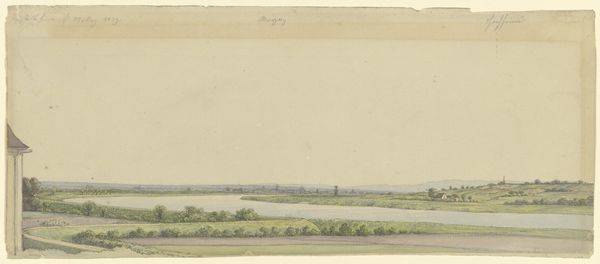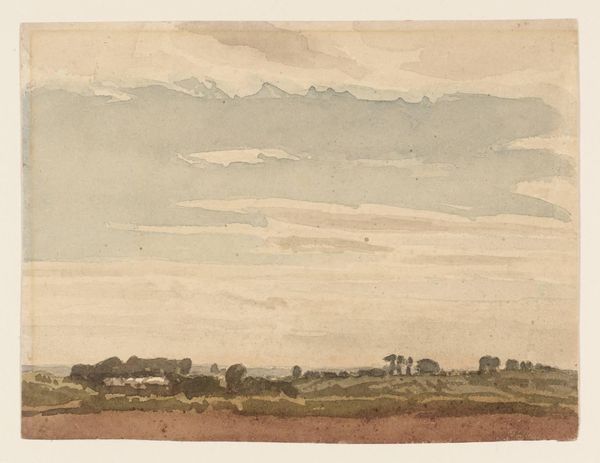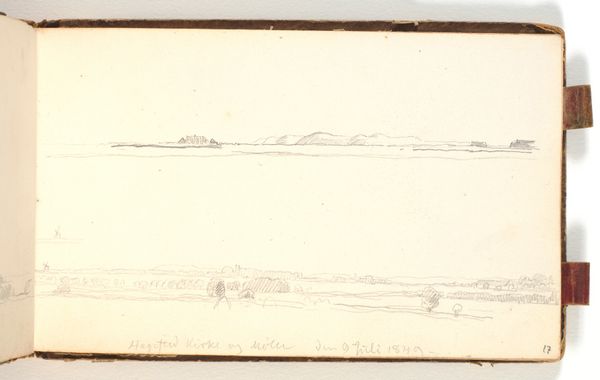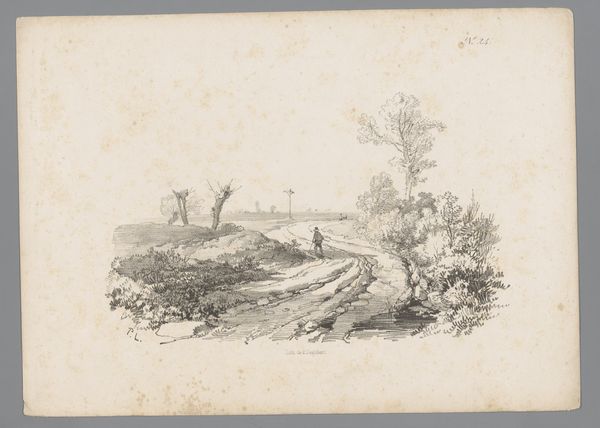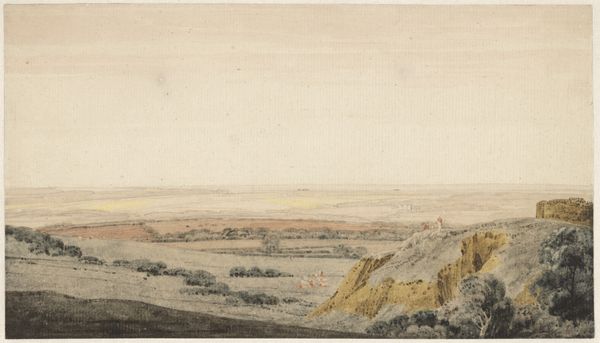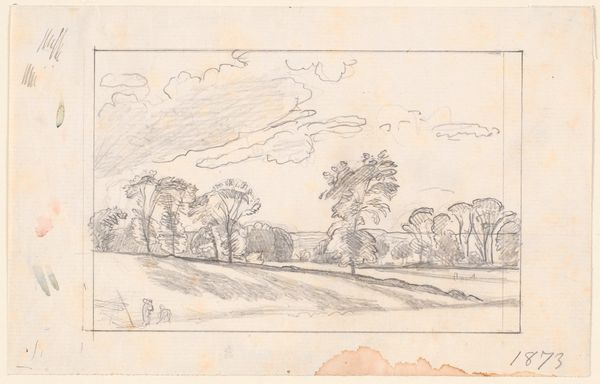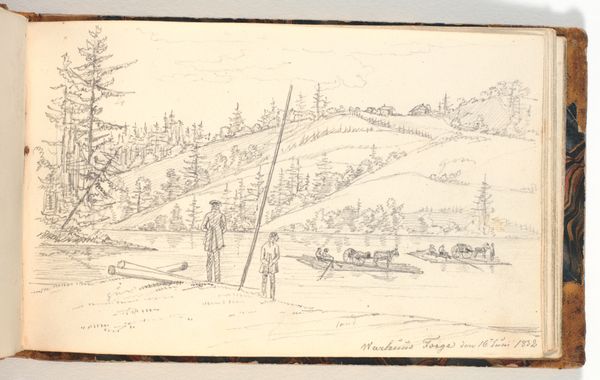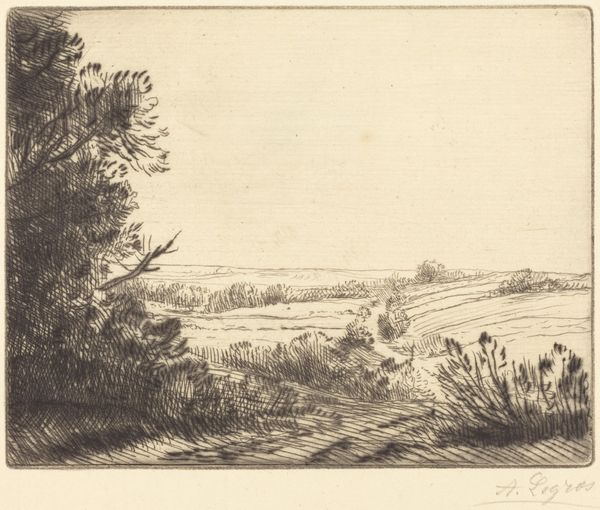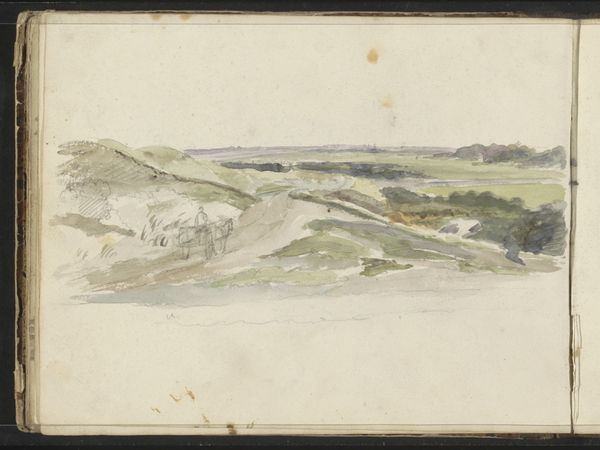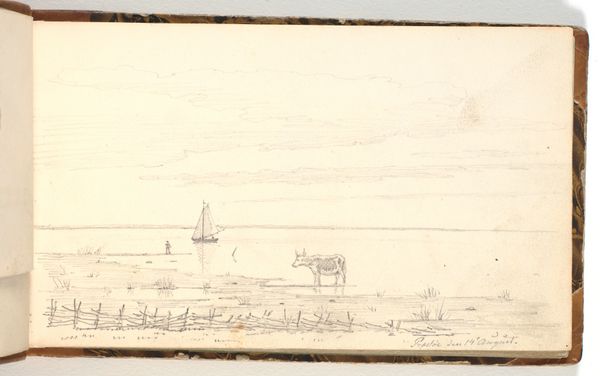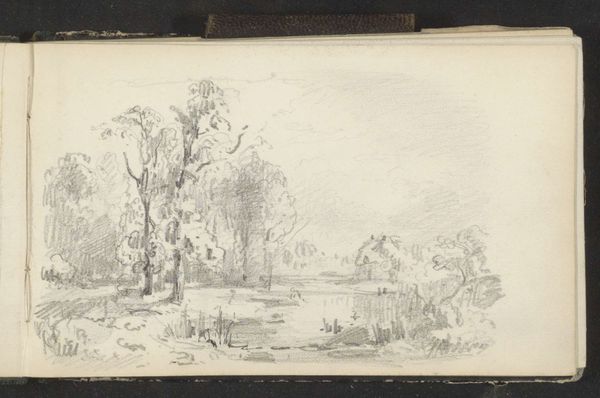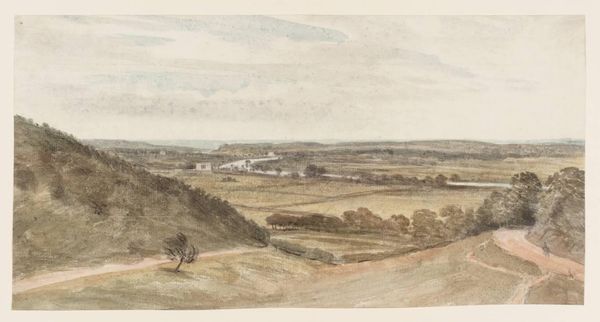
drawing, watercolor
#
drawing
#
landscape
#
watercolor
#
coloured pencil
#
watercolor
#
realism
Dimensions: 105 mm (height) x 176 mm (width) (bladmaal)
Martinus Rørbye made this landscape sketch with pen and watercolor on paper. It’s undated, but likely from the 1830s. We see a vast, open Danish landscape, a lone figure walking across a field, and a distant windmill on the horizon. This unassuming sketch, produced at a time when the art academy was the center of the Danish art world, embodies the romantic nationalism sweeping Europe in the 19th century. Rørbye was a student of C.W. Eckersberg, the father of Danish painting, who encouraged his pupils to study nature and paint en plein air. Yet the purpose was not just documentary. Landscape painting in Denmark was also about defining a national identity. The simple life of the common farmer, connected to the land, became an emblem of Danish virtue. To understand the role of the artist in society, research into the archives of the Royal Academy or contemporary journals can reveal a great deal about the social and institutional context of the time.
Comments
No comments
Be the first to comment and join the conversation on the ultimate creative platform.
